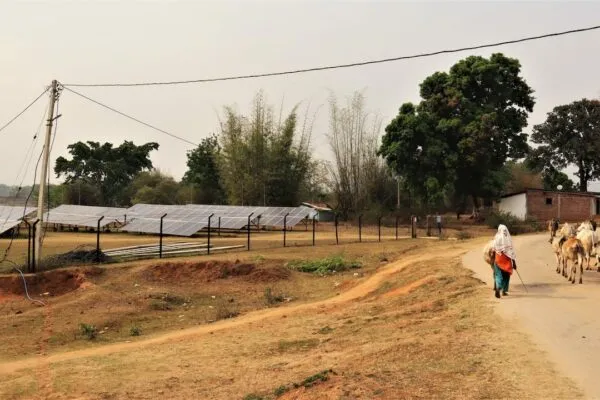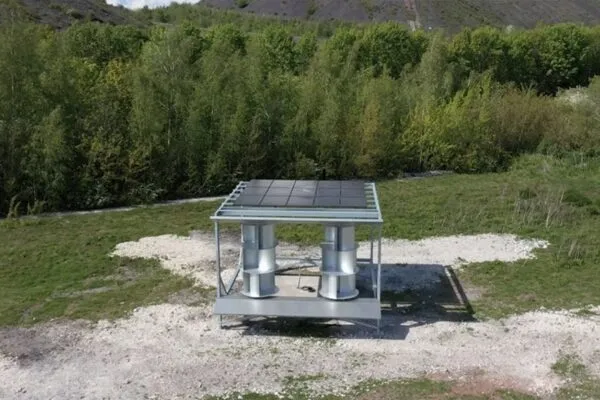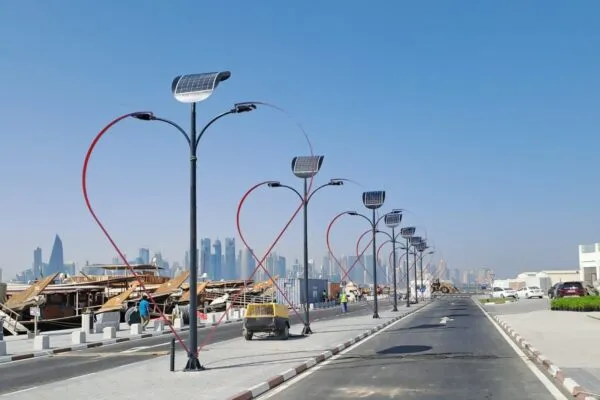Interview with deMITasse Energies, Paving Way for Green Energy Future
We talked to founders, Megha Rawat and Vijay Prateik, about how their efforts are going to transform the energy generation sector in India
With people getting more environmentally conscious; the use of sustainable products, green energy, and processes of recycling have come to rescue the planet. In a country like India, where a huge population is suffering from overconsumption of non-renewable sources of energy and pollution, finding an eco-friendly and green solution has become imperative.
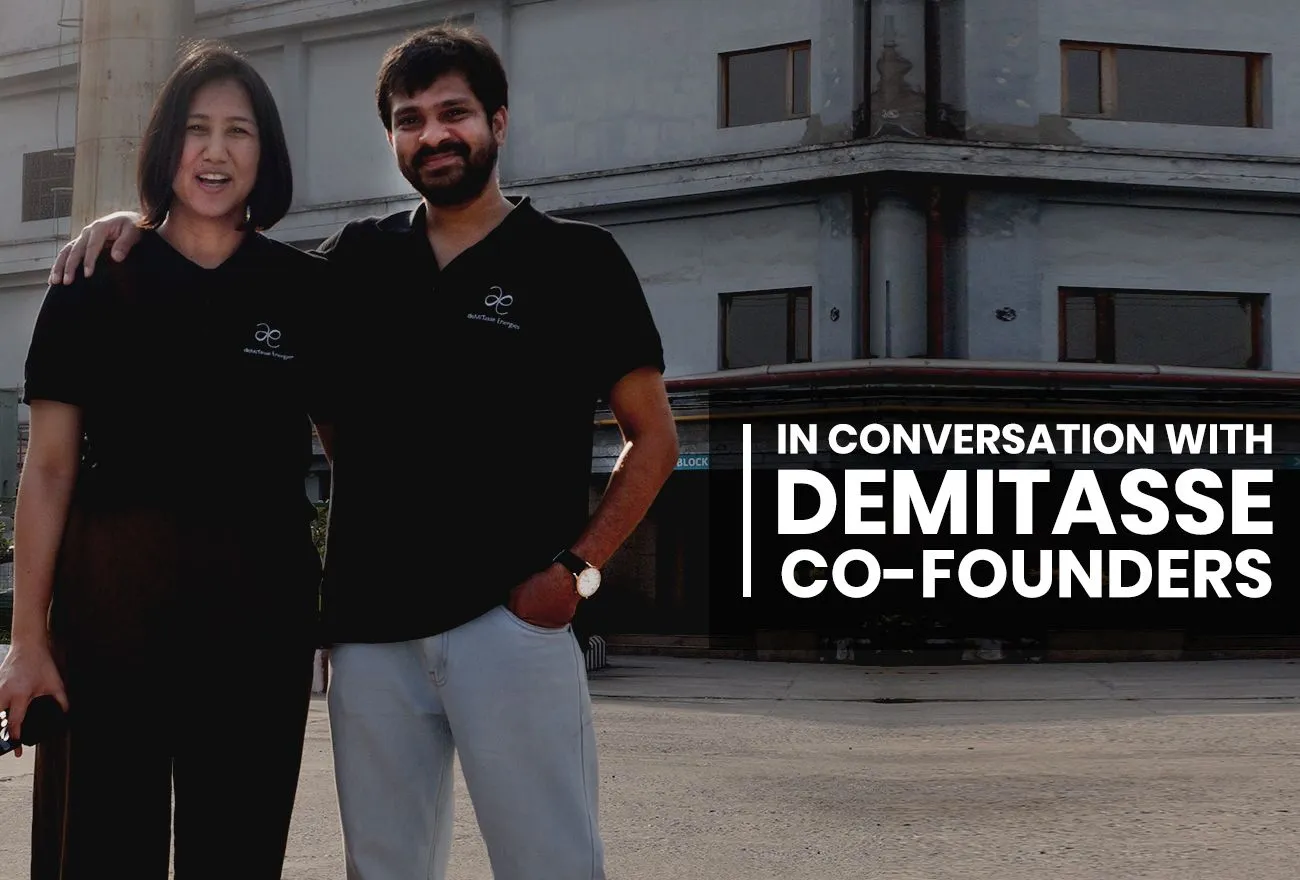
deMITasse Energies, which is a clean energy and energy storage company in India, spearheaded by young individuals like Megha Rawat and Vijay Prateik, is paving the way to this longed-for green future. We got in touch with the co-founders to delve into more depth about how their efforts are going to radically change the energy generation sector in India while powering the remote areas with equal efficiency. Read on to learn more about this interesting conversation with these entrepreneurs who have great ambitions and inputs to support them.
Planet Custodian (PC): Tell us about your venture deMITasse Energies.
deMITasse Energies: deMITasse Energies is a young company in the clean energy and energy storage industry, and builds world-class power plants that have zero emissions and are capable of storing long-duration grid-scale energy.
The company is headed by an environmentally conscious couple — Vijay Prateik (Founder and CEO) and Megha Rawat (COO and Co-founder), and is driven by the passion to help solve the gigantic problem of climate change, by transforming the polluting “black” power grid into a cleaner-green grid. Our mission is to enable fossil fuel-guzzling power grids across the globe to go zero emissions by bringing the biggest change to the grid since its invention.
Armed with our technology, we intend to enable “true” adoption of renewables on power grids across the globe. Our power plants generate power extremely efficiently, reliably and inexpensively, with zero emissions. And can store energy for very long durations, at low cost and up to grid scales.
Our plants are designed for a variety of applications, from standalone plants to waste/process heat recovery to grid-interacting energy storage plants, with generation capacity from 100kW to 2000+MW and storage capacity from 10MWh to 4000+MWh. deMITasse’s power plants can achieve round-trip efficiencies of over 70% at 30-80% lower OPEX than most other power plants with over 92-98% uptime, over 18 months of storage with less than 2% energy loss, and absolutely no emissions.
PC: What inspired you to establish a clean-tech company?
deMITasse Energies: While there are several reasons that motivate both the founders to solve this grave problem, the most important one is that if no one solves this challenge, humanity will soon destroy itself. We feel this is a significantly more important and urgent problem for humanity to solve, than predicting what ads a teenage girl will click on her social media account. Unfortunately, not a lot of people are working on this, and so we decided to pull our sleeves up, utilize our engineering skills, and get to solve this ourselves.
Vijay, especially finds huge motivation in solving this problem that he terms “the greatest challenge of our generation”, from the fact that this is an incredibly daunting task to solve, which involves many disciplines from chemical and aerospace engineering to economics and international trade. Vijay has always loved solving tough problems since childhood, and throwing himself into solving this burning issue is but natural.
Megha, on the other hand, has always been a sustainability ninja. Since childhood she has been doing her part in making the world a better place, may it be practicing a sustainable lifestyle along with her mother or Upcycling old tires to build a popular upcycled/sustainable footwear label. She has always wanted to solve problems that will improve the lives of millions of people, and not just a handful of privileged ones.
It is because of this, that she decided to shift her focus from her successfully thriving sustainable + upcycled footwear business (which can make a difference to only a few thousand lives), to a core heavy-engineering and bootstrapped startup that was building technologies to solve the energy storage problem of power grids across the world (and thus making a difference in billions of lives).
PC: Your thoughts on the impacts of climate change on developing nations like India.
deMITasse Energies: Unfortunate truth, like most other things, is that climate change affects the poor and underrepresented very unfairly and disproportionately. While developed nations have built their economies and industries through decades of inefficient utilization of resources resulting in global climate change, developing nations are today advised by such developed nations to not do the same. This is an unfair ask, as the burden of retarded economic growth and expensive adoption of renewables comes unfairly upon developed nations.
While the poorer nations have not contributed as much towards climate change as developed nations have, they face the same — often much worse — wrath and fury of nature caused by climate change. Many developing nations like the ones in the Middle East and Africa face severe draughts and famine, while other developing nations in Asia and South America face furious floods, sea-level rise and storms. To make things worse, while developed nations have the infrastructure to resist or reduce such effects, developing nations do not possess such resources and infrastructures.
It is in large parts, climate change that is causing wars across the world today, and is most likely going to be one of the important factors for wars in the future. The fact that climate change affects the poor unfairly and disproportionately only increases the divide between the rich and the poor — which is the perfect catalyst for violent unrest.
PC: The role renewable energy can play in climate change mitigation?
deMITasse Energies: The global carbon footprint contributes significantly to the deteriorating global climate health, and vast amounts of this carbon footprint comes from power plants. Also, the world is facing a critical challenge of how to meet growing energy demand while urgently reducing emissions, considering the rise in global temperature, year by year. It only suggests that the global energy system must change.
Our current energy ecosystem and infrastructure are more than 200 years old. They have been designed for stable operations and aren’t particularly adept at handling fluctuations. Base load generators are therefore the heart of any power grid. Unfortunately, most base load generators are still fossil fuel-guzzling machines.
One of the key alternatives that can help convert “black” polluting grids into cleaner and greener grids is renewables. We all grew up reading about renewables as a revolutionary technology for the energy sector, but we still consume power from the grids that run on fossil fuels.
Renewable power derives its energy from the abundant and clean natural resources available to us, may it be the sun, wind, geothermal, tidal, or a variety of other such resources. We shall never run out of these resources, and they do not harm our planet and the numerous living beings on it. If we could replace all fossil fuels with renewables, as pointed out in our 6th-grade science books more than a decade ago, the world would be a much better and healthier place without humankind sacrificing the benefits and comforts that fossil fuels provide us today. Unfortunately, this is not happening!
In recent times, the world certainly has accelerated its transition towards renewables — especially solar and wind. But this is not enough. While we invest in solar and wind, we continue to invest in petroleum and coal too. The problem with renewables is that they are intermittent and unpredictable, but the power grid requires stability. It is due to this grave inadequacy that we cannot currently replace existing fossil-fired plants with greener renewable plants. And until that is done, the grid shall continue to remain black and cleaner earth will continue to remain something found in 6th-grade science textbooks. This is something that long-duration energy storage may solve.
In order to make this happen, government and regulatory bodies need to open up and adopt renewables on the grid. Besides, it requires lots of innovation, policy reformations in energy sectors, and supporting the start-up/companies developing technologies to be renewable on the grids.
PC: How your company can power remote locations in the country and how does it help the planet?
deMITasse Energies: Powering remote locations and geographies in harsh environmental conditions has always been a daunting challenge, not just for India, but globally. It is a technical challenge to install generators and to setup a local grid, maintaining this infrastructure is a tough task as well. If such locations are to be connected to a national grid, the task becomes exponentially more taxing. But beyond the technological difficulties, lies the economic roadblocks. Investing a great deal of money and technology in such areas typically has very little or no returns on investment. Therefore very little has been done so far to electrify such remote locations with small populations.
However, with our technology, this can change. Our long-duration energy storage systems, makes solar and wind deployment significantly more economical and manageable. Microgrids using solar and wind could be made far less complicated and infinitely more reliable with our storage plants. Further, with a decentralized power model, micro-grids can be made more upgradable than they currently are, and can even effectively be connected to the national power grid without the typical transmission losses that accompany such endeavors.
While micro-grids today power a bare-minimum amount of power to their consumers — typically just sufficient to power a fan, a few LED bulbs and possibly a phone charger. The area covered by such grids is also small. But with our long-duration energy storage system, a much larger area of solar and wind (including a combination of these) can be utilized more efficiently, and reliably. As power consumption increases, the capacity of such micro-grid can also be upgraded.
Further, by such decentralized model, several such micro-grids can be interconnected, with a few nodes interacting with the national power grids — in turn benefiting both the micro-grid as well as the national grid. To set up such systems, governmental assistance is mandatory (especially for a bootstrapped startup like ours) but similar systems at smaller scales are being built and pursued by us to power telecom towers in remote, isolated and harsh climatic geographies.
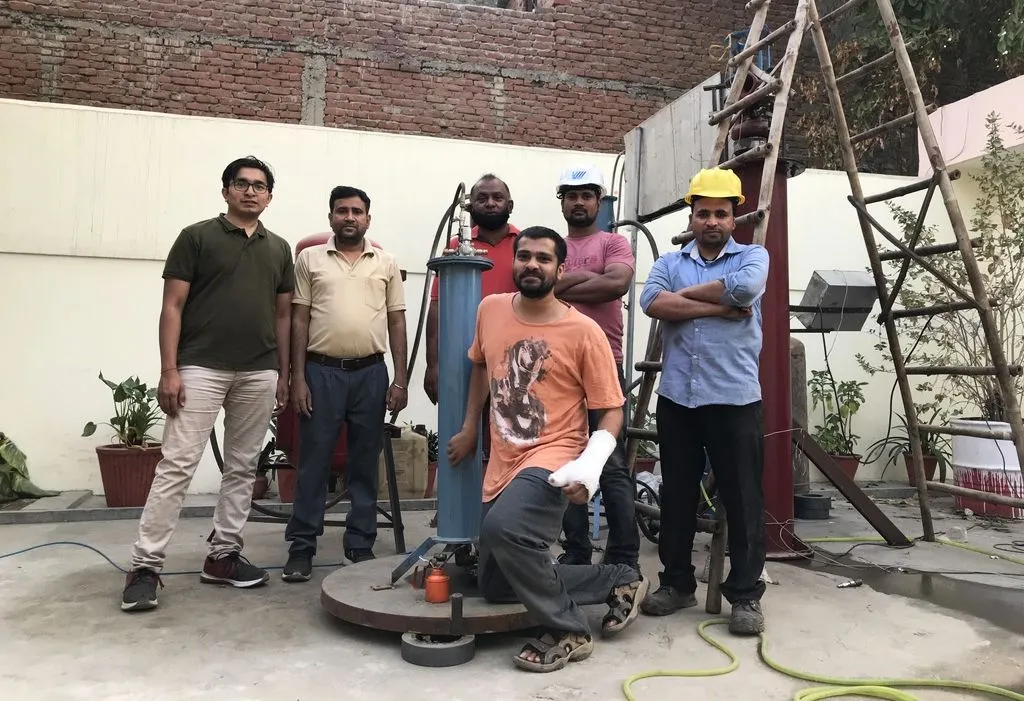
PC: What is the next big leap for your organization?
deMITasse Energies: We expect transformational breakthroughs through the application of our tech to solar and wind. While they are extremely intermittent and unpredictable today, making them impractical and impossible for base load applications, our technology can make them stable and reliable enough for base-load applications. This will help them become a mainstream source of power, and effectively eliminating the need for fossil-fired power plants (that currently represent the majority of base load generators).
Further, through the adoption of our tech, we can enable a decentralized power generation and distribution model. This enables economic growth (by providing more jobs) while reducing transmission losses. This cannot be done currently, because the plants without storage are dependent on the larger centralized power grid.
Our technology can also enable the profitable commercialization of solar thermal power plants, which are significantly more efficient in converting sunlight into electricity than photovoltaics. They also use less polluting materials, and technologies that are widely used in power plants (thus saving existing jobs). The only roadblock to the adoption of solar thermal plants is energy storage, which our technology can solve.
With the adoption of our tech, we can witness the true adoption of renewables on our power grids.
Specifically for our company, our next big leap would be seeing the deployment of our MW-scale power plants on the power grids of India and the USA in the coming months.
PC: How do you think your firm can make a difference in saving the planet?
deMITasse Energies: The world needs to urgently shift to a new 100% renewable power grid if the human race is to be saved from climate change. For that to happen, long-duration energy storage is a critical prerequisite. Unfortunately, there is no viable technology available that can help with this transition. This is how deMITasse Energies will make a difference in saving the planet.
Armed with our zero-emissions long-duration energy storage technology, which is market-ready and deployable, we intend to enable the power grid’s “true” shift to renewables across the globe. We have been working on the solution for over 6 years and have achieved TRL-5 readiness, and are currently commercializing the technology for use on power girds and large industrial plants. Having received huge commercial interest from some of the largest corporations in the energy sector from India and the USA, we are certain of our technology’s impact on humankind’s fight against climate change — both in the near term and long-term future.
Without our technology, at best, the energy storage solution will take almost 6-10 years to solve. Thus giving us very little time to combat climate change and significant harm to the planet would already have been made (many of which will be irreversible). In the worst case, unless new technologies like nuclear fusion materializes, the future of humankind would be very dark.
Climate is slated to become much worse than it is today, which will put human lives and our infrastructure on the brink of complete collapse. Maybe the only ending to such a grim scenario would be humans flying to Mars, or humans going extinct (taking several thousands of species along with them).
PC: Can you share your views on India’s net-zero target and what will it take to achieve the goal in due time?
deMITasse Energies: We believe India’s net-zero target is very ambitious — which is a good thing. But more important than goal setting is the plan through which such goals are to be achieved. Complete independence from fossil fuels is not going to happen any time soon, but its use should be diminished to negligible levels within the foreseeable future.
India is the fourth-biggest carbon-dioxide emitter after the US, China and the EU. During the COP26 our PM stated that India will reach net-zero emissions by 2070. He also made significant short-term commitments, promising to have 50% of India’s power generated by renewable energy by 2030, increase its non-fossil energy capacity to 500GW by 2030 and reduce its projected carbon emissions by 1bn tonnes between now and 2030. He has also committed to a 45% reduction in the carbon intensity of the economy.
Such goals are very ambitious but are also necessary. But to realize them, certain concrete steps need to be taken urgently. Currently, about 21% of energy generated comes from renewables, but to push it to 50% within this decade will require substantial efforts, helpful policies, and deployment of capital.
One must note that there is a significant difference between the installed capacity of renewables and actual generation from renewables. Today, over 37% of India’s installed capacity is renewable, but only a little over 21% of generated power came from such renewable plants. Unless this gap is covered, setting up renewables will be of little value. Investing in long-duration storage will have to be prioritized to solve this key issue.
Furthermore, to achieve such targets by 2030, huge investments of over $450-500 billion will have to be made immediately, as per ICRA. Making sure that such large investments are made into correct projects will need some significant effort and planning. Lastly, we also need to focus on self-reliance if we seek to achieve these targets. Most solar panels and wind turbines components are imported today, with a rise in GST for solar and the fact that prices of imported solar panels have risen by over 35% in the last 12 months show the enormous impact of various external factors in us achieving our goals.
On the demand side, a lot needs to also be done. We will have to invest significantly in transitioning towards smart meters and enabling net metering. More efficient demand-side and transmission-related equipment need to be invested in. Significant research and adoption of the latest technologies in demand-side response and management need to be undertaken immediately.
PC: Company’s long-term and short-term strategy on the ground for achieving the desired goals
deMITasse Energies: deMITasse Energies goal is to enable the “true” adoption of renewables on power grids across the globe through the adoption of our long-duration energy storage plants. We design and build these plants, with our thermochemical cycle at the core of these plants.
Our plants capture and store off-peak power from the power grid and renewable power plants, and in some cases from waste thermal energy in large industrial plants. And during periods of peak demand, we release this stored energy, instead of firing up peaker plants. This not only avoids the burning of fossil fuels, and makes renewables significantly more reliable, but also makes such renewable power plants more profitable (by avoiding curtailment).
To achieve this, we have put in over 6-7 years of core research in advanced engineering and sciences such as heterogeneous catalysis, high pressure and temperature process engineering, advanced nanotechnology, aero-thermodynamics, and high-frequency AC machines, AI/ML-powered control systems. And we are now commercializing this technology.
We have already started working with very prestigious customers and organizations, like militaries in India and the USA, two major Indian refineries, a gigantic fashion and textile brand, two large companies in the Indian boiler and power generation industry, two major Indian auto giants, among others. We have even been approached by the Governor of Colorado to help them make their power grids zero emissions before 2050 by deploying our long-duration energy storage solution.
In the near term, we plan on joining forces with major industrial plants and helping curb their emissions by deploying our plants within their industrial units. We shall also focus on capturing the sub-20MW grid-interacting energy storage market, especially alongside existing renewable power plants. In certain niche areas, like telecom towers and Indian Railways, we will deploy sub-50kW energy storage systems on a very large scale, which shall bring down the cost of such systems.
In the longer term, deMITasse Energies will build and operate grid-scale long-duration energy storage plants that will independently capture and store off-peak electricity from power grids, renewable power plants and captive power plants in industrial units, at a relatively low price of power. This will enable uninterrupted operations of renewables, independent of the demand on the grid, and thus improve their profitability.
During periods of peak demand, or during periods when renewables are not available, this stored energy shall be provided to power the grid. This power will be sold at a premium. This way, deMITasse Energies will make revenue profitably, while providing stability to the power grid and profitability to renewables. In that sense, deMITasse Energies will act like an independent power provider that can provide power within a very short notice period (which is not possible on today’s grid), where it sells electric power as a subscription-based service — which is how most utilities are run today.
